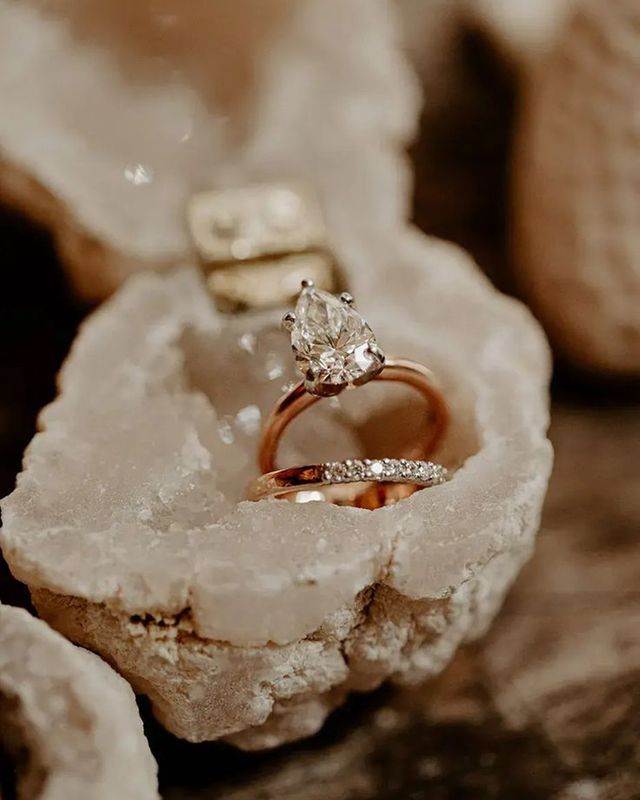
“It’s essential to think about what style of jewellery they already wear. Are they super colourful and bold? Do they stick to one metal colour or stack lots of smaller pieces in a more subtle way? Do they love an oversized look? You’ll want the engagement ring to tie in with their style in a seamless way so that they feel just right when they wear it."
Engagement Ring Shapes
1. Round Brilliant
The most popular and classic shape, known for maximising sparkle and brilliance due to its 58-facet cut.
2. Princess
A modern, square-shaped diamond with sharp corners and excellent brilliance, giving a contemporary and chic look.
3. Cushion
A square or rectangular shape with rounded corners and larger facets, resembling a pillow. Known for a vintage appeal and soft sparkle.
4. Emerald
A rectangular shape with step cuts, known for its clear, large facets that emphasise clarity and give a sophisticated look.
5. Oval
An elongated, symmetrical shape that combines the sparkle of a round cut with a more unique, elongated look, often making fingers appear longer.
6. Marquise
An elongated shape with pointed ends, designed to maximise carat weight and create an illusion of length, enhancing finger length.
7. Pear
A combination of round and marquise shapes with one rounded end and one pointed end, resembling a teardrop. This shape also elongates the fingers.
8. Asscher
Similar to the emerald cut but square, featuring step cuts and a “hall of mirrors” effect, popular for its Art Deco style.
9. Radiant
A rectangular or square cut with trimmed corners, combining the sparkle of a round cut with the shape of an emerald or princess cut.
10. Heart
Shaped like a heart, symbolising romance and uniqueness. Requires precise cutting to achieve symmetrical heart shape and brilliance.
11. Trillion
A triangular shape with three equal sides, often used as a side stone but also popular for unique centre stones. It has a modern, bold look.
12. Baguette
A long, rectangular shape with straight edges and step cuts, often used as side stones but sometimes as the main stone for a minimalist look.
13. Hexagon and Octogon Cuts
Geometric shapes, typically custom-made, offer a unique, vintage-inspired look with six or eight sides, which are gaining popularity in modern designs.
The ultimate engagement ring guide
Easily visualise ring shapes and settings by simply downloading our engagement ring guide to take along when shopping for your engagement ring!
Download our engagement ring guide.jpg?fit=1)
Rock My Wedding's guide to engagement ring shapes and settings
Engagement Ring Trends 2025
According to Harriet Haxby, Qualified Gemologist and Engagement Ring Specialist, these are the top trends to look for in 2025!
"I think green will continue to prove popular in 2025 - from bright emeralds to teal and the full range of pale to deep green sapphires, there is so much variety when it comes to finding a green hue to suit your preference. I see lighter yellow sapphires or champagne diamonds becoming the neutral trend for those who aren’t ‘colour’ people but want a ring that is slightly more unique and will still fit in with their personal style.
Clients are becoming more experimental and open to less conventional designs which widens the scope of possibility and I’m here for it! I think we’ll see more organic and sculptural settings, which are less symmetrical in their dimensions, more so in yellow gold.
As the price of gold continues to rise, I predict that more clients will consider shopping second-hand: there are so many exquisite vintage and antique engagement rings, especially from the Art Deco and Victorian eras, which are still a unique choice (as handmade jewellery was never mass produced). It is both a sustainable option and great value for money. This is a service I offer so get in touch if you would like any help!"